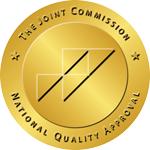Key Takeaway:
- Recognizing harmful drinking patterns involves understanding the signs and symptoms of alcohol abuse, such as drinking to cope with stress or emotions, neglecting responsibilities, and experiencing withdrawal symptoms when not drinking.
- To address harmful drinking patterns, it is important to seek professional help, such as therapy or addiction treatment, and to develop healthy coping mechanisms, like exercise or spending time with supportive friends and family.
- Preventing harmful drinking patterns involves moderation, setting boundaries, and being mindful of the effects of alcohol on mental and physical health. Education and awareness can also help individuals recognize and address harmful drinking patterns before they become entrenched habits.
Do you stress that you, or somebody close to you, drinks too much? Distinguishing between harmless drinking practices and more serious drinking difficulties can be hard. This post will teach you how to acknowledge damaging drinking designs.
Introduction
Spotting damaging drinking patterns is an essential part of preventing alcohol abuse and addiction. These patterns are drinking habits that can harm one’s physical, emotional, and social wellbeing. Here are the usual signs:
- Binge drinking: drinking a lot in a short time, usually 4-5 drinks within two hours.
- Drinking to cope: using alcohol to handle stress, anxiety, or depression.
- Drinking as a habit: drinking at certain times or situations, like each evening after work or at social events.
- Neglecting duties: disregarding jobs and responsibilities at home or work because of alcohol use.
- Tolerance: needing more alcohol to feel the same effects that used to be achieved with less.
- Withdrawal: having physical and emotional symptoms when trying to cut down or quit drinking.
Acknowledging and dealing with any of these bad drinking patterns can help avoid bad outcomes and lead to a healthier and more content life.
Assessment
Assessing is essential to identify bad drinking habits. To spot them, watch out for signs like:
- Drinking alone or early in the day
- Drinking to face stress or feelings
- Not doing duties due to alcohol
- Consuming too much, often, or for too long
- Building tolerance or having withdrawal symptoms.
If any of these signs are present, an in-depth assessment should be done by a health professional. It includes a physical exam, lab exams, and a mental health evaluation. Based on the assessment results, the health professional can propose different treatment options, e.g. counselling, drugs, or support groups.
It is necessary to recognize bad drinking habits and get help to prevent short-term and long-term damage to both physical and mental health.
Screening for alcohol misuse
Screening for alcohol misuse is key. It can recognize bad drinking patterns, and stop long-term health issues. There are tools like AUDIT, CAGE, and T-ACE to identify risky drinking. They’re easy to use and can spot dangerous drinking levels.
Healthcare staff use these tools to create effective plans and help people with drinking problems. When answering questions, be honest. This gives an accurate picture of consumption.
Regular screenings can help catch a possible issue. You can get help and treatment before it causes major health problems.
Assessing alcohol-related matters is fundamental for recognizing damaging drinking habits. Catching them early can prevent grave physical and social outcomes. Here are some signs of a drinking problem that needs further assessment:
- Regular hangovers and tiredness
- Growing tolerance resulting in higher alcohol consumption
- Drinking alone or being secretive about it
- Not tending to duties and relationships due to drinking
- Consuming alcohol despite unfavourable outcomes such as accidents or legal issues
- Requiring alcohol to act normally in daily life
- Withdrawal symptoms including trembling, sweating, and anxiety when no drinking.
Getting professional aid and joining support groups can help with the evaluation and creating an effective treatment plan to beat alcohol addiction.
General Principles for Interventions
General Principles for Interventions are a must-have for recognizing and dealing with bad drinking habits in individuals. These principles can help healthcare providers, therapists, social workers, and more create a successful intervention plan. It’s important to follow these principles:
- Collaborate: Work with the person and their support system to handle the bad drinking in an understanding, respectful, and compassionate way.
- Individualize: Tailor the intervention to each individual’s background, motivations, triggers, and goals.
- Evidence-Based: Use evidence-based practices like cognitive-behavioral therapy, motivational interviewing, and medications for treating alcohol use disorders.
- Multimodal: Combine all possible interventions, such as individual, group, and family therapy, pharmacotherapy, and support groups.
- Cultural Sensitivity: Take the person’s culture into account to understand their views and behavior regarding alcohol use.
To sum up, recognizing and addressing bad drinking habits needs a collaborative, individualized, culturally sensitive, evidence-based, and multimodal approach.
Providing education on harmful effects of alcohol
It is essential to educate people on the dangers of alcohol. It is a main cause of avoidable death worldwide, and can have a big effect on physical and mental wellbeing. Examples of harmful drinking patterns are: binge drinking, alcohol abuse, and alcoholism.
- Binge drinking involves consuming lots of alcohol in a short time, which can lead to poisoning, accidents, and injuries.
- Alcohol abuse is when people drink even if it causes issues like legal or relationship problems, and can turn into an addiction.
- Alcoholism is a long-term illness which can cause problems like liver and brain damage, high blood pressure, and a weak immune system.
Educating on alcohol’s risks helps people make informed decisions about drinking and stops dangerous drinking habits from developing.
Developing a treatment plan
Creating a treatment plan is essential when people have bad drinking habits. This plan should be customized to their needs and situation. The plan might have various parts.
The first stage is recognizing the bad drinking habits, including too much alcohol, binge drinking, drinking to deal with stress, or alcohol abuse. A few signals of bad drinking could be: ignoring personal or work duties, taking risks, and feeling withdrawal symptoms when not drinking.
The plan should help the individual understand the reasons for their bad drinking habits. Possible components of the plan could be:
- Therapy or counseling
- Medication
- Support groups or 12-step programs
- Changes to their lifestyle
It’s important to remember that a professional is needed to create the plan, like a mental health therapist or addiction specialist. This way, the person gets the best care. An efficient treatment plan can help them take control of their life, improve their health, and start the recovery process.
Interventions for Maintenance of Abstinence
Knowledge of dangerous drinking habits is fundamental to avoiding alcohol. Behaviors such as binge drinking and drinking in risky situations should be recognized.
To stay sober, one can use counseling, support groups, and medication. Counseling and therapy helps people comprehend and tackle any emotional or psychological problems that are connected to drinking. Support groups offer a network with others who have been through similar experiences, and offer both emotional help and responsibility.
Medicines like Naltrexone can also decrease the craving to drink. Furthermore, activities like mindfulness, yoga, and exercise can reduce stress and promote overall well-being, all of which can aid to abstaining from alcohol. Knowing about hazardous drinking habits and utilizing these interventions can be the initial step to living a healthy and sober lifestyle.
Psychosocial interventions can be a great way to help people with damaging drinking habits. These methods focus on psychological and social elements that contribute to the drinking problem. They can help reduce cravings, enhance coping skills, and avoid relapse.
Some popular psychosocial interventions are:
- Cognitive Behavioral Therapy (CBT): CBT is a type of therapy that recognizes and alters negative thought patterns and behaviors. It can support those suffering from harmful drinking by addressing the underlying psychological causes.
- Motivational Enhancement Therapy (MET): MET is a type of therapy that emphasizes the individual’s desire to modify their behavior. It can be very useful for those who are unsure about changing their drinking and can help them to be more prepared to make a change.
- Family Therapy: Family therapy can be effective for those with damaging drinking patterns. It can improve family connections and address the family issues that may be causing the drinking.
Medication-assisted treatment
Medication-assisted treatment is a strategy to help people with alcohol use disorder. It uses drugs like naltrexone, disulfiram, and acamprosate. Knowing warning signs of problem drinking is important. These signs can include: drinking alone, preferring drinking over other duties, and withdrawal symptoms when not drinking.
Medication-assisted treatment works by blocking the enjoyable effects of alcohol or lessening withdrawal symptoms. But, it’s important to get professional medical advice before starting. A medical provider can suggest the right medication, dose, and plan based on the person’s symptoms and history.
Managing Comorbid Conditions and Complications of Alcohol Misuse
Recognizing when drinking pattern are harmful is the 1st step in managing conditions and problems caused by alcohol misuse. Harmful drinking patterns often involve drinking too much or drinking excessively and without control, which can lead to physical, psychological, or social issues. Conditions like liver disease, heart disease, and mental health issues such as depression and anxiety are commonly connected to alcohol misuse. Further, alcohol misuse can cause several complications like accidents, injuries, and bad decision-making.
To handle comorbid conditions and complications from alcohol misuse, it may help to see a medical specialist who can make a tailored treatment plan. Treatment could involve psychotherapy, medicines, and lifestyle changes such as cutting down on alcohol or giving up drinking all together. By spotting harmful drinking patterns and getting medical advice, people can improve their mental and physical health and avoid the problems related to alcohol misuse.
Identification and management of coexisting medical and psychiatric conditions
When dealing with harmful drinking patterns, it’s vital to spot and treat any medical and psychiatric conditions that could be adding to the issue. This involves a comprehensive plan that manages both physical and mental parts of addiction.
Examples of medical and psychiatric conditions often found together with harmful drinking patterns include anxiety, depression, bipolar disorder, and schizophrenia. In many cases, the underlying condition might have caused the drinking problem – and all of these areas must be taken care of at the same time to see real, long-term recovery.
Treatment for coexisting conditions might include medication, therapy, support groups, and lifestyle changes. It’s also important to educate the patient and their loved ones about addiction and mental health, so that less stigma is attached and more awareness is raised.
By using a multidisciplinary approach to tackle harmful drinking patterns and related medical and psychiatric conditions, patients can attain lasting recovery, as well as better general health and wellbeing.
Alcohol withdrawal management
Alcohol addiction recovery involves an important process of withdrawal management. Acknowledging dangerous patterns of drinking is the initial stage to secure successful withdrawal management.
Signs of alcohol withdrawal include trembles, uneasiness, seizures, and hallucinations. During withdrawal, it is vital to seek medical attention, as serious symptoms can bring about life-threatening problems like Delirium Tremens.
Withdrawal includes total abstinence from alcohol, a healthy diet, and hydration. Depending on the intensity of withdrawal symptoms, medically-assisted detoxification may be recommended.
To stay away from relapse, counseling or joining support groups like Alcoholics Anonymous is essential. Psychological aid assists individuals to comprehend the source of their addiction, and devise coping strategies to manage tense situations without reaching for alcohol.
To sum up, recognizing harmful drinking habits and getting professional help can assist individuals in undergoing a successful alcohol withdrawal management process and journey towards recovery.
Managing complications such as liver disease and pancreatitis
Complications like liver disease and pancreatitis need identifying and dealing with harmful drinking habits. Types of harmful drinking include binge, heavy and alcohol use disorder. To manage these complications, here are some strategies:
- Get medical help: If you were diagnosed with liver or pancreas problems, get treatment quick. Your doctor might suggest medicine or other treatments.
- Stop drinking: If you have alcohol use disorder, quitting is the best way to avoid further complications. Get help from family, friends or a counselor to stay sober.
- Regular check-ups: If you had heavy drinking in the past or were diagnosed with liver/pancreas issues, regular check-ups are important. This will help monitor your health and catch complications early.
- Eat healthy: Eating healthy can help your liver and pancreas. Avoid fatty and fried foods, eat lots of fruits and veggies.
Provenance
Provenance can help identify bad drinking habits. By finding the source of the behavior, we can spot any problems and work out solutions.
Warning signs can include:
- Binge drinking
- Drinking alone
- Blackouts or memory loss
- Putting drinking ahead of other tasks
- Using alcohol to manage stress or emotions.
Alcohol misuse can be very dangerous, so seeking expert help could be necessary. Knowing your bad drinking habits is the first step to a healthier life.
References
Researching and writing about recognizing harmful drinking patterns requires reliable references. Here are some to consider:
- NIAAA: Info and resources on identifying harmful drinking and reducing risk. Keywords: alcohol abuse, alcoholism, harmful drinking, drinking patterns, risk reduction.
- CDC: Guidelines for moderate and harmful alcohol consumption, and health risks. Keywords: alcohol guidelines, moderate drinking, health risks, alcohol-related harm.
- SAMHSA: Substance abuse, addiction, recovery and prevention info. Keywords: substance abuse, addiction, recovery, prevention, mental health.
- WHO: Facts and stats on alcohol consumption and public health. Keywords: alcohol consumption, public health, alcohol-related harm, statistics.
Five Well-Known Facts About Recognizing Harmful Drinking Patterns:
- ✅ Harmful drinking patterns can lead to a range of physical and mental health problems, including liver damage and depression. (Source: National Institute on Alcohol Abuse and Alcoholism)
- ✅ Hazardous drinking is often defined as consuming more than 14 drinks per week for men and more than 7 drinks per week for women. (Source: World Health Organization)
- ✅ Binge drinking is a pattern of drinking that brings blood alcohol concentration levels to 0.08 g/dL or higher, typically within 2 hours. (Source: Centers for Disease Control and Prevention)
- ✅ Early intervention is crucial in recognizing and addressing harmful drinking patterns. (Source: Substance Abuse and Mental Health Services Administration)
- ✅ Screening tools, such as the AUDIT, can be effective in identifying individuals with harmful drinking patterns and connecting them with appropriate resources. (Source: American Family Physician)
FAQs about Recognizing Harmful Drinking Patterns
What are harmful drinking patterns?
Harmful drinking patterns refer to excessive and regular consumption of alcohol that can have negative physical, mental, and social effects on an individual’s health and well-being.
How do I know if I have a harmful drinking pattern?
Some signs of harmful drinking patterns can include binge drinking, blackouts, and problems at work, school, or home. It’s essential to be aware of your drinking habits and seek help if you are concerned.
What are the health risks associated with harmful drinking patterns?
Harmful drinking patterns can lead to a range of health risks, including liver disease, heart disease, depression, anxiety, and even cancer. The risk increases with the amount and frequency of alcohol consumption.
How can I recognize if someone I know has harmful drinking patterns?
Signs of harmful drinking patterns in someone else can include frequent hangovers, neglecting responsibilities, withdrawing from social activities, and mood swings. It’s essential to approach the person with care and offer support and resources for help.
What should I do if I suspect I or someone I know has harmful drinking patterns?
If you suspect you or someone you know has harmful drinking patterns, seek help immediately. Talk to a medical professional, a counselor, or a support group. It’s important to address the issue before it leads to more severe consequences.
How can I prevent harmful drinking patterns?
You can prevent harmful drinking patterns by being aware of your drinking habits, setting limits, and seeking support when needed. It’s also important to have a healthy lifestyle, a strong support system, and alternatives to alcohol consumption.



